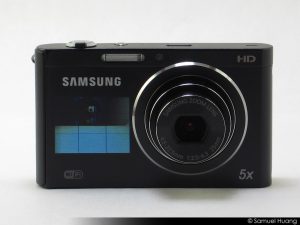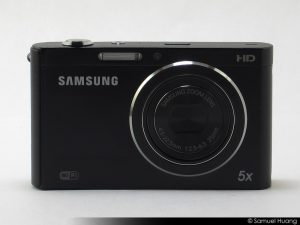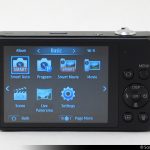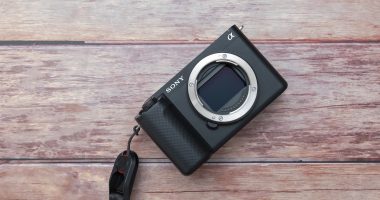 Whether or not compact cameras are still popular with people is a question I’ve been asking myself lately and a question I’m sure most of you have as well. Back before the explosion of mobile camera phones, I know a lot of people used to buy and carry with them a small, compact camera. These days however, I’ve noticed so many people foregoing this option and just snapping photos with whatever camera phone they have. For the most part, camera phone images are pretty good these days and in fact, most are good enough to print. However, I’m still the type who believes carrying around a real camera because you still can’t beat the image quality of a real camera with good optics. Yes I have an iPhone 4 that takes great photos when I need something handy, but it has its limitations. Because of this, I still carry around with me a small compact camera daily in case I need something better.
Whether or not compact cameras are still popular with people is a question I’ve been asking myself lately and a question I’m sure most of you have as well. Back before the explosion of mobile camera phones, I know a lot of people used to buy and carry with them a small, compact camera. These days however, I’ve noticed so many people foregoing this option and just snapping photos with whatever camera phone they have. For the most part, camera phone images are pretty good these days and in fact, most are good enough to print. However, I’m still the type who believes carrying around a real camera because you still can’t beat the image quality of a real camera with good optics. Yes I have an iPhone 4 that takes great photos when I need something handy, but it has its limitations. Because of this, I still carry around with me a small compact camera daily in case I need something better.
With all that said, today I’m taking a quick look at the new Samsung DV300F DualView SMART camera. This is a small compact camera that features dual LCD screens (one in the front and one in the back), Wi-Fi connectivity, HD video recording, and a 5x optical zoom paired with a 16-megapixel sensor. I’ll get more into the specs and usage of the camera in the full review post. In the meantime, this is a hands-on preview based on my initial impressions of the bodies look and feel.
Body & Design
 First of all, the Samsung FV300F looks like pretty much every other sub-compact camera out there. The only thing that really separates it from other cameras is its huge SAMSUNG logo embossed right on the front of the camera. It has a pretty standard camera layout when seen from the front. Most of the front is flat except for a tiny lip on the left that acts as a hand grip and the rim around the lens protrudes a tiny bit. The lens is located prominently on the right of the camera but where most cameras might have their flash unit to the upper right of the camera, the FV300F puts it just left of the lens. I was a bit worried about maybe having a finger block this, but it’s high up enough where it won’t. A tiny bit right of the flash is the AF-assist light. In the big open space below the flash is where the front facing LCD resides. It’s hidden quite well and you don’t even notice it until you turn it on.
First of all, the Samsung FV300F looks like pretty much every other sub-compact camera out there. The only thing that really separates it from other cameras is its huge SAMSUNG logo embossed right on the front of the camera. It has a pretty standard camera layout when seen from the front. Most of the front is flat except for a tiny lip on the left that acts as a hand grip and the rim around the lens protrudes a tiny bit. The lens is located prominently on the right of the camera but where most cameras might have their flash unit to the upper right of the camera, the FV300F puts it just left of the lens. I was a bit worried about maybe having a finger block this, but it’s high up enough where it won’t. A tiny bit right of the flash is the AF-assist light. In the big open space below the flash is where the front facing LCD resides. It’s hidden quite well and you don’t even notice it until you turn it on.
Rotating the DV300F clockwise to the side, you’ll notice that there is nothing here except for the words “16.1 MEGA PIXELS” printed on the side.
 Moving to the rear of the camera, you’ll see a familiar layout as most compact cameras are laid out the same way, LCD on the left, buttons on the right. The LCD screen takes up a good portion of the rear and sits flush with the rear panel. The button layout is pretty standard for point-and-shoots. There is the familiar circle pad layout and nothing here really comes as a surprise. What I do see missing here however is any sort of thumb rest which is usually located in the upper right and the DV300F also does not include a dedicated movie record button like most cameras do these days. That means if you want to shoot a quick video, you have to go through the menu first to select that mode. Overall, a simple layout that makes it easy to use for most people.
Moving to the rear of the camera, you’ll see a familiar layout as most compact cameras are laid out the same way, LCD on the left, buttons on the right. The LCD screen takes up a good portion of the rear and sits flush with the rear panel. The button layout is pretty standard for point-and-shoots. There is the familiar circle pad layout and nothing here really comes as a surprise. What I do see missing here however is any sort of thumb rest which is usually located in the upper right and the DV300F also does not include a dedicated movie record button like most cameras do these days. That means if you want to shoot a quick video, you have to go through the menu first to select that mode. Overall, a simple layout that makes it easy to use for most people.
Rotating the camera clockwise again, you’ll see that this side of the camera isn’t as bare as the other side. Here you’ll find the door that leads to a single port which is a combination USB/Recharge/AV. Above the door, you’ll find a protruding wrist strap eyelet. Some cameras have them flush with the body, but I find that those are hard to get the wrist strap installed on. This method makes it much easier.
 Looking at the top of the camera, you’ll find very little buttons up here too. Basically you’ll find the standard shutter release button which is surrounded by the zoom toggle. Again, very familiar to those who you point-and-shoots. To the left of that, you’ll find the power button that sits just flush of the top plate. This makes it less likely to be accidentally pressed when in your pocket or in a bag. Just to the left of the power button is a little mic hole. Sitting right above where the lens is is the F.LCD button which will activate the front LCD screen for self portraits.
Looking at the top of the camera, you’ll find very little buttons up here too. Basically you’ll find the standard shutter release button which is surrounded by the zoom toggle. Again, very familiar to those who you point-and-shoots. To the left of that, you’ll find the power button that sits just flush of the top plate. This makes it less likely to be accidentally pressed when in your pocket or in a bag. Just to the left of the power button is a little mic hole. Sitting right above where the lens is is the F.LCD button which will activate the front LCD screen for self portraits.
The bottom of the camera sits another door for the battery and memory card. Seems standard here until you open up the door. What is surprising here is that Samsung chose to use Micro SD format here to save space. This is actually the first camera I’ve come across that uses this. I suggest picking yourself up a 8gb Micro SD card or higher so that you will not need to ever remove it. These cards are very small and easily lost so it’s better if you never need to swap them out. The only other thing at the bottom of the camera is the tripod mount which is located very closely to the battery door.
Final Thoughts
 The DV300F is a very handsome camera. It’s very minimalistic design and smooth body make it look and feel good in your hands and slides easily in and out of your pocket. I really like how Samsung integrated the front LCD viewscreen where it is hidden underneath the face of the camera. This gives the camera a very clean look up front and also makes good use of what otherwise would be a wasted area of space. Quality wise, the DV300F feels pretty solid but also very lightweight. It’s also pretty thin for a camera which again helps with it being highly pocketable.
The DV300F is a very handsome camera. It’s very minimalistic design and smooth body make it look and feel good in your hands and slides easily in and out of your pocket. I really like how Samsung integrated the front LCD viewscreen where it is hidden underneath the face of the camera. This gives the camera a very clean look up front and also makes good use of what otherwise would be a wasted area of space. Quality wise, the DV300F feels pretty solid but also very lightweight. It’s also pretty thin for a camera which again helps with it being highly pocketable.
I haven’t had a chance to shoot with it yet, but hopefully the images are pretty decent and shooting will be as simple as the other Samsung cameras I’ve looked at in the past. I’m looking forward to trying out the front LCD setup as it’s one of the main features so we’ll see how that works out in the main review later.
Shop Link
Black – Samsung DV300F Dual View Smart Camera – Black









